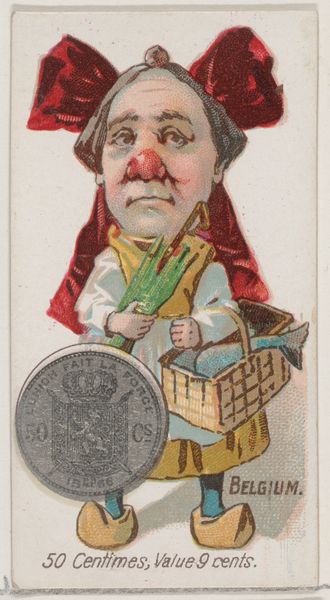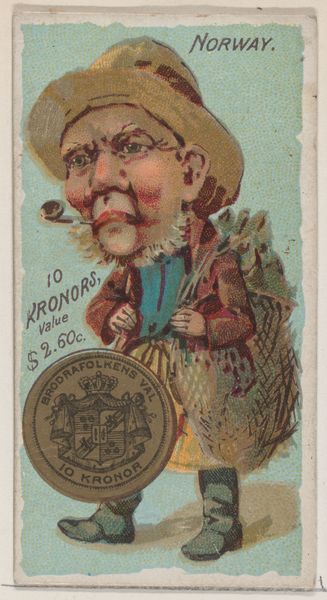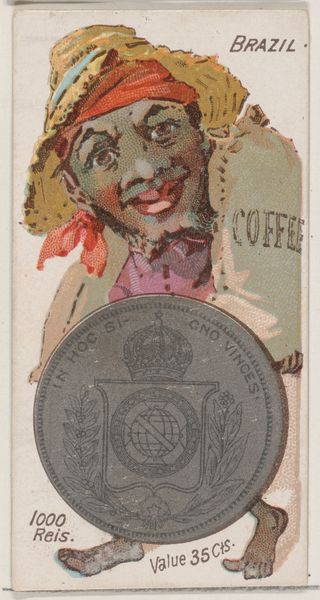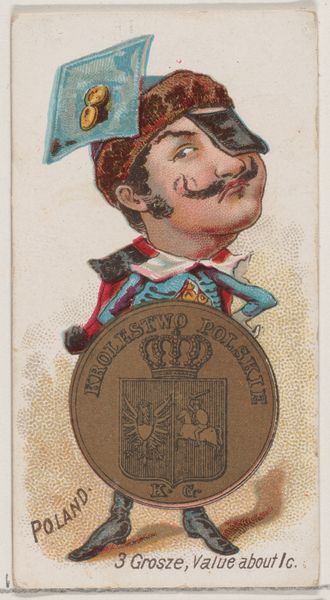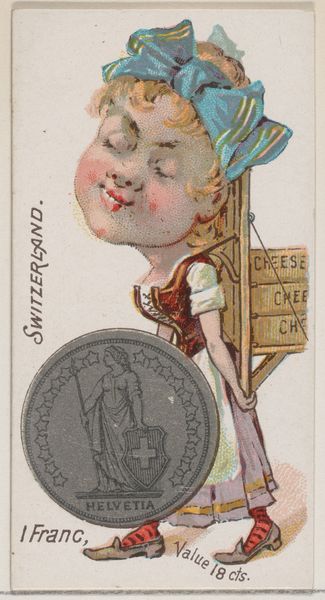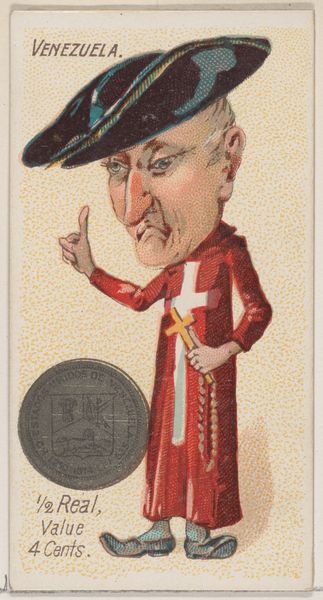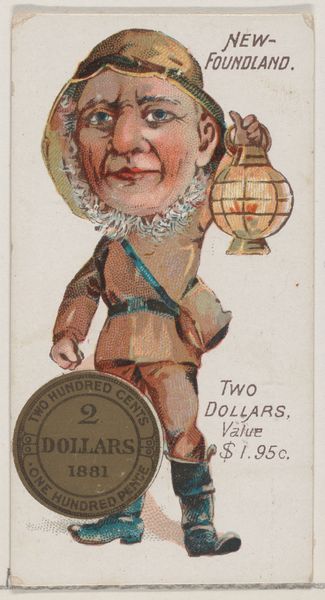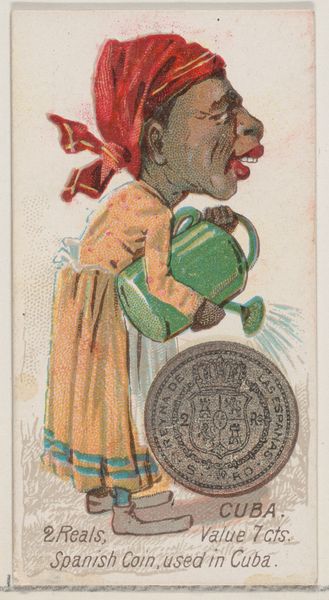
Caricatured Spaniard, 1 Peseta, from the series Coins of All Nations (N72, variation 1) for Duke brand cigarettes 1889
0:00
0:00
drawing, coloured-pencil, print
#
portrait
#
drawing
#
coloured-pencil
# print
#
caricature
#
caricature
#
coloured pencil
Dimensions: Sheet: 2 3/4 x 1 1/2 in. (7 x 3.8 cm)
Copyright: Public Domain
Editor: Here we have "Caricatured Spaniard, 1 Peseta," a colored-pencil print created around 1889 as part of a series for Duke brand cigarettes. The caricature feels a little unsettling. The colors are almost lurid, and the figure's expression is so sour. How should we read this piece? Curator: Observe how the artist juxtaposes the grotesque caricature of the figure with the precise detail of the coin. Notice the contrast between the rough texture of the figure's robe and the smooth, metallic rendering of the currency. This creates a visual tension, a disharmony. Editor: Disharmony in what way? Are you referring to a tension of style? Curator: Indeed. The artist's use of caricature violates traditional representational strategies of portraiture. Look how the features are exaggerated; how the subtle gradations of color on the face create volume, yet the distorted proportions flatten the form. It's a study in conflicting aesthetic languages. Do you observe the use of line in the figure’s hooded robe and facial folds, juxtaposed with a seemingly more refined treatment of the coin? Editor: I see what you mean. It’s like the artist is intentionally playing with different modes of representation. One realistic, and one more…distorted, right? Curator: Precisely. This deliberate juxtaposition forces the viewer to question the nature of representation itself. Are we looking at a commentary on value? A satire of Spanish identity? The work presents more questions than answers. Editor: So, the piece is about its construction – its lines and color choices – just as much as what it seems to represent. Thanks for the different way to appreciate this unusual caricature. Curator: Indeed, art speaks through the choices artists make with medium, line and perspective. Reflecting on these allows a new reading, every time.
Comments
No comments
Be the first to comment and join the conversation on the ultimate creative platform.

